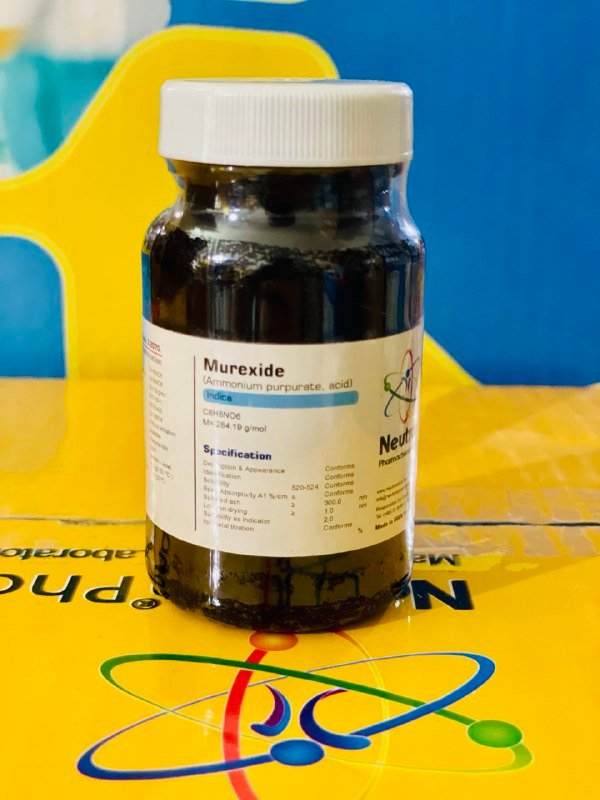Murexide is an organic compound and the ammonium salt of purpuric acid. It appears as a purple crystalline solid and dissolves in water. In aqueous solutions, it exhibits pH-dependent color changes: yellow at low pH, reddish-purple in slightly acidic conditions, and blue-purple in alkaline environments.
History
Murexide was first studied in the 1830s by German chemists Justus von Liebig and Friedrich Wöhler, who extracted it from snake excrement. However, this source was not practical for large-scale use. In the 1850s, French colorists and dye manufacturers, such as Depoully in Paris, succeeded in producing murexide from guano — a more abundant raw material from South America. This made its application on natural fibers feasible and led to its widespread adoption in Britain, France, and Germany.
Preparation
Murexide can be synthesized through several methods:
• Heating alloxantin with ammonia at around 100 °C
• Reacting uramil (5-aminobarbituric acid) with mercury(II) oxide
• Digesting alloxan in alcoholic ammonia
🧪 Applications
• Analytical Chemistry: Murexide is used as a complexometric indicator in titrations, primarily for detecting calcium ions, but also applicable for copper, nickel, cobalt, thorium, and rare earth metals. It acts as a tridentate ligand.
• Modern Use: While historically important, its role has largely been replaced by calcium ion-selective electrodes in modern analytical methods.



